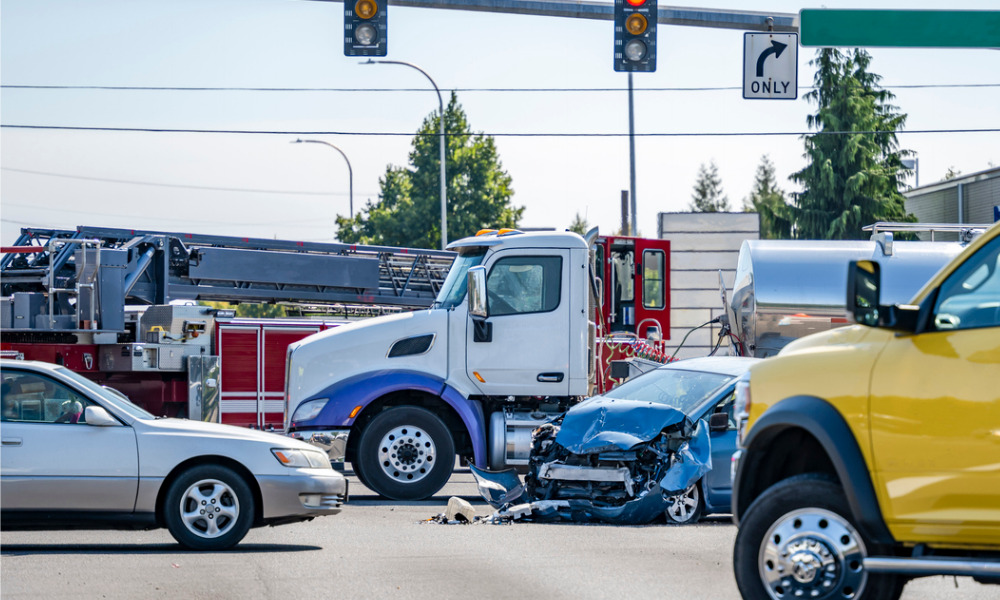
Judge denies appeal that yellow light and left turn should have been considered more at trial

The Court of Appeal for British Columbia has ruled that right-of-way is not determinative of negligence or apportionment in an intersection collision.
In Steinlauf v. Deol, 2022 BCCA 96, Steinlauf turned left into an intersection when an oncoming tractor-trailer driven by Deol struck him broadside. Steinlauf suffered serious injuries from this intersection collision. The trial judge apportioned liability at 85 percent against Deol and 15 percent against Steinlauf. He also assessed damages for loss of future earning capacity at $3,179,000 and loss of past and future homemaking capacity at $182,000. Deol appealed, alleging that the trial judge failed to consider the yellow light and turn left provisions of the Motor Vehicle Act, RSBC 1996, c 318.
The appellate court disagreed.
According to the court, trial judges must apportion fault and relative blameworthiness between drivers.
The appellate court ruled that Deol’s focus on a right-of-way analysis was of limited assistance. While “a through-driver has the right-of-way when it is close enough to constitute an immediate hazard, right-of-way is determinative of neither negligence nor apportionment,” said the court.
The court also considered evidence that Steinlauf entered the intersection on a green light, which turned yellow as he waited to make his left turn, and Deol could have safely stopped since he was “about 64 meters from the intersection when the light turned yellow.” The court ruled that the trial judge’s analysis was not intent on locating Deol’s vehicle but meant to indicate that Deol would not have started to turn left had he looked.
As to apportionment, the appellate court ruled that the trial judge was in the best position to assess negligence and blameworthiness of the parties. Deol failed to establish palpable and overriding error and error in principle said the court.
The court also dismissed the appeal on the future earning capacity and future homemaking capacity.
“Where the evidence establishes a highly likely career path, this process does not require the trial judge to plot each possible event in the plaintiff’s future and consider its relative likelihood,” said the court. The judge’s award considered all the evidence and accounted for relative likelihood, despite not specifically articulating it; therefore, it is entitled to deference, said the court.